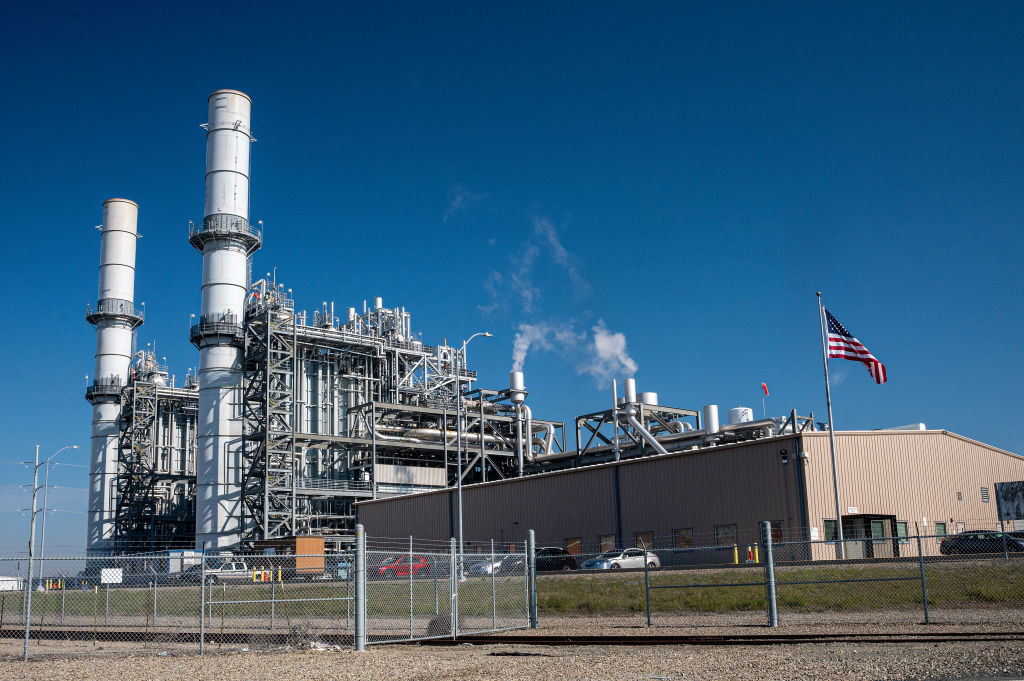
(To get this story in your inbox, subscribe to the TIME CO2 Leadership Report newsletter here.)
The Environmental Protection Agency has been on a rulemaking frenzy this year, issuing a suite of new regulations over the past few months designed to cut pollution. From rules on how to dispose of waste from coal-fired power plants to new requirements for passenger vehicles, the drumbeat has felt almost non-stop.
On Thursday, the EPA announced the biggest measure yet: new greenhouse gas emissions standards for power plants that run on coal and natural gas. The move will create new requirements for new gas-fired power plants, as well as some natural gas and coal-fired plants already in operation. The outcome, the Biden Administration hopes, is that the rule will lay the groundwork for an electric grid powered entirely by clean power by 2035. “The President’s ‘100% by 2035’ goal for the power sector [has] been the north star that has guided policy,” said Ali Zaidi, President Biden’s national climate advisor, ahead of the announcement. “And part of that approach is setting rules of the road that can help facilitate and reinforce that shift.”
On its own the rule is significant. But the rule is also designed as a crown jewel of sorts, the anchor of a much bigger set of rules and regulations. To understand its significance, it’s important to look at it as part of that bigger picture.
Biden entered office with a promise to put climate at the center of his national agenda, and it was clear from the beginning that he viewed the private sector as critical to that goal. His top climate officials hit the road almost immediately to engage with industry, and the Administration quickly embraced public-private partnerships aimed at cutting emissions. His international climate agenda, too, focused on catalyzing private finance. Most importantly, his central legislative effort, the Inflation Reduction Act (IRA), focused almost entirely on positive incentives to encourage industry rather than penalties, proverbial carrots rather than sticks.
EPA Administrator Michael Regan described his goal to me last summer as using regulation to create “rules of the road” rather than penalizing industry. “This is not a hostage negotiation,” he told me. “This is a conversation about how we’re all going to win the future.”
Regan told me that, in the past, companies have viewed the drumbeat of EPA regulations as “death by 1,000 paper cuts.” He wanted to present the power sector with “a suite of regulations” in quick succession, he said. “The power sector then can take a look at the economics to comply with those rules at one time, or they can say ‘hey, to hell with the past, let’s invest more quickly in the future.’”
Taking such an approach with power plant rules was always going to be challenging. Power plant regulation has been a source of tension between industry and the federal government ever since the Supreme Court ruled in 2006 that the EPA needed to regulate carbon dioxide emissions. Since then, successive administrations have tried and failed to write rules that would stand up to legal scrutiny—often due to intense blowback from industry.
The attempt to win over power companies is evident in the final language of the rule announced this week. While the rule will clearly push some coal-fired power plants to close early and impose new costs on the construction of new natural gas plants, it goes to lengths to ease the transition for industry. Companies face less stringent standards for existing plants that will retire before 2035 compared to 2040, as well as for plants that are designed to operate less frequently. And the companies that do choose to install carbon capture technology to meet the standards will benefit from tax incentives in the IRA, helping them stomach the cost.
Many regulated companies will of course continue to complain about the regulations—and indeed many corporate executives are skeptical of the new power plant rules. But it’s hard to deny that the Administration has tried to engage companies. The Edison Electric Institute, a trade group for investor owned utilities, issued a carefully parsed statement on the new rule, delaying judgment but thanking the Administration for working closely with industry as it formulated them.
“They’ve been great partners with us,” Pedro Pizarro, the CEO of Edison International, which provides electricity for 15 million in Southern California, told me last fall. “We really appreciate that.”
Those compromises seem to have worked, as many companies are responding to the array of nudges—and not just in the power sector but across the economy. The IRA has driven a spike in investment in U.S.-based clean technology manufacturing even as the Administration is still putting the finishing touches on how to implement and disburse money under that law. And a Deloitte survey from earlier this year found that 65% of C-suite officers had increased their climate action in response to the changing regulatory climate.
Some activists will complain that the Administration’s approach to climate—including with this regulation—has been too business friendly. But, without Democratic control of Congress and with a Supreme Court that has severely limited the ability of agencies to maneuver, options are limited.
More Must-Reads from TIME
- Cybersecurity Experts Are Sounding the Alarm on DOGE
- Meet the 2025 Women of the Year
- The Harsh Truth About Disability Inclusion
- Why Do More Young Adults Have Cancer?
- Colman Domingo Leads With Radical Love
- How to Get Better at Doing Things Alone
- Michelle Zauner Stares Down the Darkness
Write to Justin Worland at justin.worland@time.com